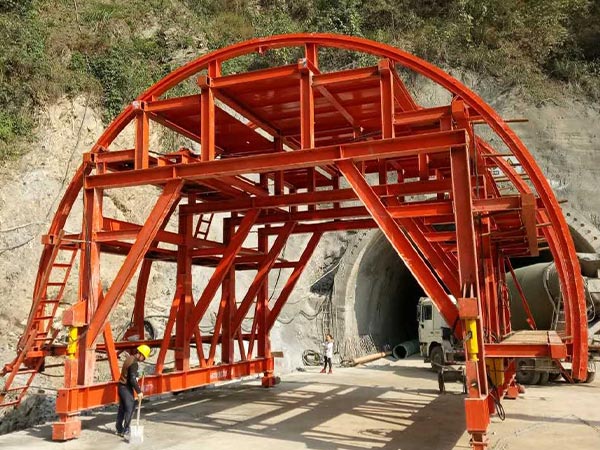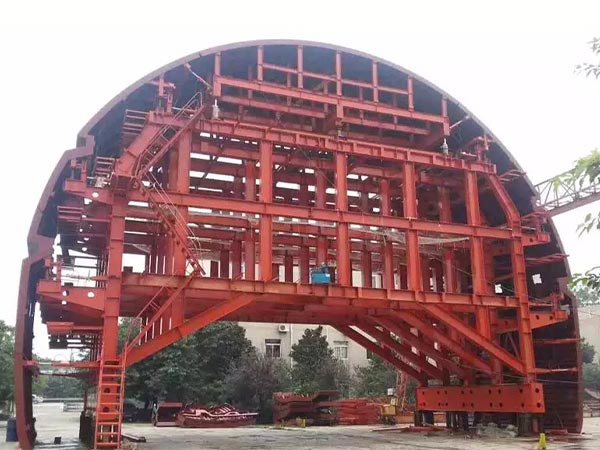Standard Practice for Key Procedures of Tunnel Construction
In the process of tunnel construction, some key construction procedures are often encountered, such as: hole excavation, hollow anchor grouting quick joint, sprayed concrete, overall processing of steel arches, connecting plate processing and installation, secondary lining Rebar installation, waterproofing, secondary lining concrete, lining concrete curing, cable trench and drainage ditch, etc. What should be the standard practices for these tunnel construction content? What should be paid attention to on site construction?
Excavation
The three-step seven-step excavation method adopted in the excavation of the tunnel body is mainly to excavate the tunnel at the same time as staggering the seven excavation faces, and support at the same time to form the support as a whole, and gradually advance to the depth. It has construction Large space, high degree of mechanization, simple initial support procedures, flexible adjustments, high work efficiency, stable progress, and strong construction period security.
The tunnel body excavation is carried out in the “dual machine single hole” mode of the tunnel three-arm rock drilling rig, which effectively improves the rock drilling speed, safety factor and environmental protection effect, and improves the tunnel construction environment.
Hollow bolt grouting quick joint hole
The grouting quick connector has the following advantages:
(1) Easy and quick installation;
(2) It is closely attached to the bolt and grouting pipe connection, which can effectively ensure the grouting pressure and full grouting;
(3) Quick coupling valves can be reused, reducing construction costs;
(4) Improved the previous construction conditions of manual pipe grouting, and solved the problem of workers’ eyes being easily injured by the grout during the grouting process.

Spraying concrete with wet spraying machine
The initial support concrete of the construction tunnel, the first sprayed concrete is dense and smooth, and the quality is stable, which effectively solves the problems of large dust, high resilience and unstable concrete quality in the traditional construction technology. The use of wet spraying machine to construct the initial support concrete of the tunnel greatly improves the construction environment of the tunnel sprayed concrete, guarantees the safety and health of the operators, and requires fewer operators, less material loss, and conforms to the energy-saving and environmentally-friendly construction concept.
The tunnel adopts the secondary spraying process to construct the primary concrete, and through the secondary spraying of the uneven parts of the primary spray, the smoothness of the sprayed concrete surface is ensured and the hidden quality risk of voids behind the secondary lining caused by the uneven surface of the sprayed concrete is eliminated.
Integral processing of steel arch
①According to the total length of the tunnel steel arch frame, the material is cut in place at one time, and the whole is cold-formed;
② Cut into sections according to the section size set by the tunnel excavation plan; this process can ensure the accuracy of the steel arch size from the source, so that the overall arc is smooth after the arch is installed and formed, and the adjacent segment axis at the joint The center coincides and the position of the connecting hole is accurate to ensure the structural force performance of the arch frame.

Connection plate processing and installation
The steel arch connecting plate and the I-beam are welded by carbon dioxide shielded welding, and the weld quality is good. Carbon dioxide shielded welding has the advantages of strong penetration, large penetration, good weld formation, firm welding, strong crack resistance, small post-weld deformation, and simple operation.
Second liner steel installation
The positioning of the secondary lining steel bars is a weak link in the quality control of the tunnel. In order to improve the installation quality of the secondary lining steel bars, the following installation techniques can be adopted to ensure that the steel bar spacing, row spacing and protective layer thickness meet the design requirements.
1. Accurately process steel bars of various specifications according to the design requirements, accurately control the position of the embedded steel bars in the side walls of the arch toe, and grasp the source of the accurate placement of the secondary lining steel bars.
2. Set up the installation trolley and positioning frame for the positioning of the steel bars, and make full use of the standard interlayer connection structure steel bars to accurately control the spacing between the two lining and two layers of steel bars to ensure the accuracy of the circumferential position of the steel bars.
3. Using fixtures for positioning, control the longitudinal spacing of the main reinforcement; adjust the line shape of the reinforcement skeleton by pulling the wire.
4. The use of high-strength concrete pads as a reinforcement measure for the protective layer of the secondary lining steel bars to ensure that the thickness of the protective layer of steel bars is strictly controlled.

Waterproof treatment
A hot-melt positioning device is used to fix the second-lined waterproof board. The hot-melt pad can be fixed at any position of the initial support of the tunnel or surrounding rock with nails. The primary support or surrounding rock is tightly attached, and the tightness is moderate, effectively reducing the void of the secondary lining.
Improve the structure of the end template of the secondary lining trolley, set a central waterstop reserved groove in the middle of the end template according to the design position, install the end template and the waterstop at the same time, and fasten the waterstop by the special bolt on the template , to ensure that the location is accurate and firm.
Second lining concrete
Control the quality of raw materials, adjust the slump of concrete in real time, improve the vibrating process, strengthen the repair and maintenance of the formwork trolley, so that the surface of the second-lined concrete after the mold is removed is smooth, dense, smooth, and consistent in color, achieving the effect of beauty inside and outside.
Cable trench and drainage ditch
Large steel molds are used to cast tunnel cable trenches and drainage ditch on-site, which has better control of the cable trench and drainage ditch line shape, and the concrete surface is flat and compact; the cable trench and drainage ditch cover plate adopts plastic shaped molds, and vibrated with a vibrating table. The cover has a good appearance, a stable size, and is easy to install.
The above is the entire content of the standard practices for the key procedures of tunnel construction. The tunnel construction process must strictly follow the construction rules to avoid certain hidden safety hazards caused by cutting corners and materials.


